
Is the common peroneal nerve the solution for you?
In all diagnoses of drop foot, we must first define the signs, symptoms and causes. Drop foot is a disorder that most commonly creates problems while walking. A correlated symptom is difficulty pulling your foot up towards you off the ground while walking. Along with this, you may notice difficulty moving your foot sideways, away from the opposite foot. Everything combined creates the perfect storm for a nasty fall. When you can’t lift your foot off the ground, you are at high risk for injury since your foot is not able to clear uneven surfaces. The root cause? Simply put, your leg muscles that lift and raise your foot are weaker than normal.
Causes of Drop Foot
Brain and Spinal Cord – This may include stroke, multiple sclerosis, muscular dystrophy and amyotrophic lateral sclerosis.
Trauma – Any form of trauma to the leg that may damage the common peroneal nerve. This nerve is the primary nerve needed to stimulate the muscles that move your foot upwards.
Surgery – Knee and hip surgery may cause drop foot as a complication of the surgery.
Neuropathy – Diabetic and non-diabetic neuropathy may also cause drop foot.
Diagnosing Drop Foot
Physical Examination – Clinically, a physician may test your muscle strength by visually observing you walk with what is referred to as a “steppage gait”. This describes a gait pattern where you lift your knee up more on the side with drop foot symptoms, so that the foot clears the ground to avoid tripping on the foot. An EMG may also be ordered to test the common peroneal nerve that supplies the muscles used to lift your foot up.
Ultrasound and MRI – These forms of imaging may be useful to see if there is compression on the nerve.
Treatment
Drop foot, or foot drop, is a condition that can significantly impact mobility and quality of life. Since it results from nerve injuries, muscle disorders, or neurological conditions, it makes it challenging for individuals to walk normally. Addressing this condition involves a multifaceted approach tailored to the underlying cause and the severity of the symptoms.
Treatment options for drop foot vary based on the underlying cause and severity of the condition. Common treatments include:
- Bracing and Orthotics: Ankle-foot orthoses (AFOs) are commonly used to support the foot and ankle, improving walking ability and preventing the foot from dragging.
- Physical Therapy: Physical therapy can help strengthen the muscles in the foot and lower leg, improve range of motion, and enhance overall gait. Exercises often focus on improving flexibility, strength, and coordination.
- Electrical Stimulation: Functional electrical stimulation (FES) devices can be used to stimulate the nerves and muscles in the lower leg, promoting muscle contraction and aiding in lifting the foot.
- Medications: If the drop foot is caused by an underlying condition such as multiple sclerosis or nerve inflammation, medications to treat these conditions might be prescribed. Anti-inflammatory drugs and pain relievers may also be used to manage symptoms.
- Surgery: In severe cases, surgical intervention may be necessary. Procedures can include nerve decompression, tendon transfer, or fusion surgeries to improve foot positioning and function.
- Lifestyle Modifications: Adapting the environment, using assistive devices, and making changes to footwear can help manage symptoms and improve mobility.
Early diagnosis and a tailored treatment plan are crucial for managing drop foot effectively and improving quality of life.
Surgery
Bone and Tendon Surgery – There are surgical procedures that transfer fully functioning tendons and muscles to areas where the tendons and muscles are weakened from the drop foot condition. Another option is to fuse specific joints of the foot or ankle so the foot and ankle maintain a better position for walking.
N erve Surgery – This is surgery on the common peroneal nerve, the source of the problem. Now, it’s important I emphasize the importance of the common peroneal nerve because the question truly is; “Is The Common Peroneal Nerve The Solution For You?” So often I see patients who go through trial and error, itching for a solution that seems impossible to find. If you have a drop foot, it’s important that you learn about the common peroneal nerve. For most patients, this is the source of the problem and therefore the solution to improving, or reversing drop foot. The common peroneal nerve is a branch of the sciatic nerve. It goes around the outside of the leg just below the knee joint. As it goes from behind the knee to the front of the leg, it goes through a nerve tunnel. If this nerve tunnel is tight or the nerve has been stretched, we remove the pressure in this area so the symptoms can be improved. Here are some examples:
Neuropathy
People who suffer from neuropathy will have burning, tingling, and numbness in their feet, toes and legs. For some, weakness may also occur resulting in drop foot. This situation can occur in patients with diabetic and non-diabetic neuropathy. Conventional medicine has not done a good job of training medical professionals about the peripheral nervous system in the lower extremity. Doctors have been slow to understand that neuropathy may be caused by nerve tunnels (like carpal tunnel in the hand) that become too tight. As a peripheral nerve surgeon, we have been trained to open nerve tunnels to relieve the pressure on the nerve, therefore reversing neuropathy symptoms. Weakness in patients with neuropathy can be from compression on the common personal nerve.
Hip and Knee Surgery
Patients who have undergone knee and hip replacement surgery are at risk of getting drop foot after surgery. This may occur from the sciatic nerve and the common peroneal nerve getting stretched. By surgically opening the common peroneal nerve tunnel to release pressure on the nerve, the drop foot can be reversed. The common recommendation to those who have this complication is to wait and see if it gets better over time, some waiting a whole year. The suggestion of a peripheral nerve surgeon would be to consider surgical decompression within the first 90 days if there is no improvement of the drop foot. Why? Because if there is no trending towards improvement, waiting longer will limit how much improvement of the drop foot can be achieved with surgery.
Trauma
There are situations where direct trauma to the common peroneal nerve can occur. Examples would be an impact to the nerve tunnel region, or severe knee joint trauma such as a knee dislocation. The same rule applies in these situations, as with patients with drop foot after knee and hip surgery. If no improvement in the first 90 days, surgical decompression must be considered.
So, if you are experiencing a drop foot, it’s important that you consider a peripheral nerve surgeon as part of the improvement process in your situation. Sitting back and waiting to see if it “gets better” can be one of the worst choices.
References
Drop foot from hip replacement surgery
Ng J, Marson BA, Broodryk A. Foot drop following closed reduction of a total hip replacement. BMJ Case Rep. 2016 Mar 22;2016:bcr2016215010. doi: 10.1136/bcr-2016-215010. PMID: 27005799; PMCID: PMC4823537.
https://www.ncbi.nlm.nih.gov/pmc/articles/PMC4823537/
Drop foot from knee replacement surgery
Carender CN, Bedard NA, An Q, Brown TS. Common Peroneal Nerve Injury and Recovery after Total Knee Arthroplasty: A Systematic Review. Arthroplast Today. 2020 Aug 22;6(4):662-667. doi: 10.1016/j.artd.2020.07.017. PMID: 32875016; PMCID: PMC7451888.
https://www.ncbi.nlm.nih.gov/pmc/articles/PMC7451888/

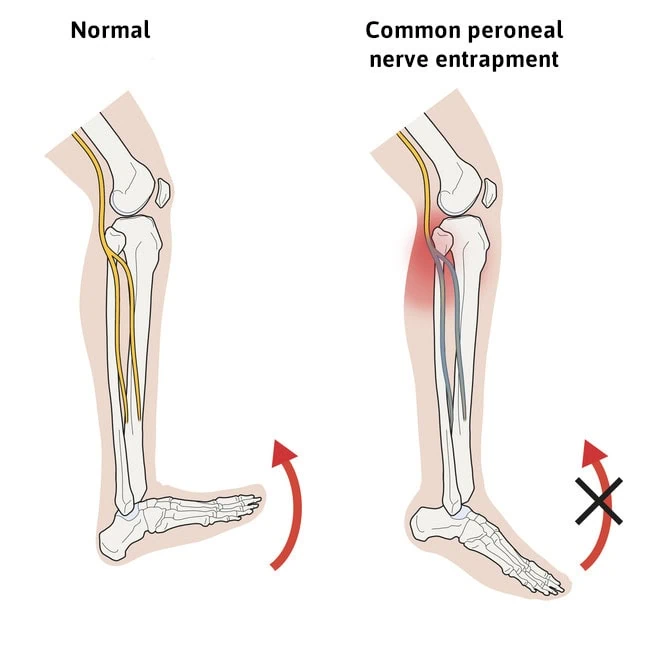
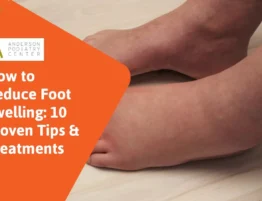
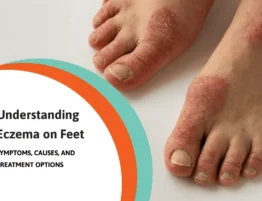


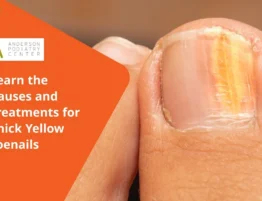
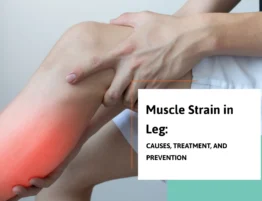
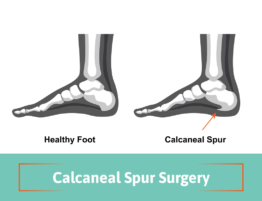
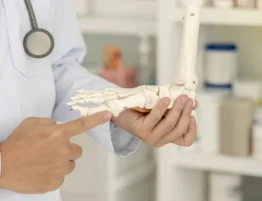
Write a comment: